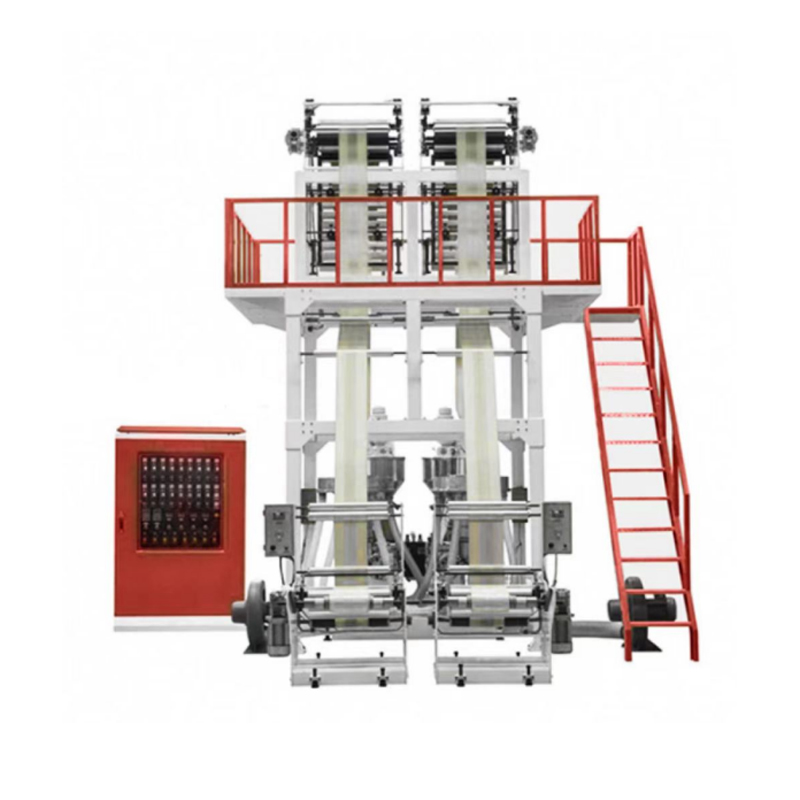Double Head Blown Film Machines Enhance Production Flexibility and Efficiency in Packaging Industry
 By Admin
By Admin
In the highly competitive flexible packaging sector, manufacturers continually seek equipment solutions that offer versatility, productivity, and cost efficiency. Enter the Double Head Blown Film Machine, an innovative technology designed to meet these demands by combining two extrusion heads on a single platform, allowing simultaneous production of different films or a significant increase in output.
1. Dual Extrusion Capability for Increased Output
The hallmark feature of a double head blown film machine is its ability to operate two extrusion heads simultaneously. This capability effectively doubles production capacity without requiring additional floor space or separate machines. Depending on configuration, the two extrusion heads can either produce two different films at the same time or operate together to increase the output volume of a single film grade.
This design is particularly valuable for manufacturers facing fluctuating market demands, enabling them to switch between product lines rapidly or run parallel production runs, thereby plant utilization.
2. Enhanced Production Flexibility
Double head blown film machines provide unparalleled flexibility in film manufacturing. With two independent extrusion systems, operators can process different polymers, thicknesses, or colors simultaneously. This allows converters to offer a broader product portfolio without investing in multiple single-head lines.
For example, a single double head machine can produce both polyethylene (PE) films for grocery bags on one head and polypropylene (PP) films for food packaging on the other, streamlining operations and reducing capital expenditure.
3. Space and Cost Efficiency
By integrating two extrusion units into one frame, double head blown film machines optimize plant floor space and reduce equipment overheads. Compared to installing two separate machines, a double head system requires less infrastructure, including electrical supply, cooling systems, and operator labor.
This configuration translates into lower total cost of ownership, making it an attractive option for mid-sized to large manufacturers aiming to expand capacity without significant facility expansion.
4. Independent Process Control
Each extrusion head in a double head blown film machine operates with independent control systems, including temperature, screw speed, and air ring settings. This autonomy ensures that both films maintain their specific production parameters, regardless of the material or product requirements.

Such precise control enhances film quality consistency, allowing each film to meet exacting standards for thickness uniformity, mechanical properties, and optical clarity.
5. Improved Film Quality and Consistency
Double head blown film machines are equipped with features such as servo-driven motors, digital thickness control, and advanced cooling systems on both extrusion lines. These technologies contribute to improved film gauge stability, reduced scrap rates, and surface finish.
The ability to fine-tune each extrusion head separately means that films with different performance characteristics—such as barrier properties, sealability, or tensile strength—can be produced with high consistency on the same machine.
6. Quick Changeover and Maintenance
Despite housing two extrusion systems, modern double head blown film machines are designed with user-friendly interfaces and modular components to facilitate quick changeovers and maintenance. Operators can perform scheduled maintenance or material changes on one head while the other remains operational, reducing downtime.
This feature is particularly beneficial for high-mix production environments where frequent product changes are necessary.
7. Energy Efficiency and Automation
Though featuring dual extrusion heads, these machines are engineered for energy-efficient operation. Integration of variable frequency drives (VFDs), optimized screw designs, and thermal insulation ensures that power consumption is minimized even during simultaneous operation.
Automation systems enable remote monitoring, real-time process adjustments, and predictive maintenance alerts, contributing to reduced waste, higher uptime, and improved operational efficiency.
8. Adaptability to Various Film Types
Double head blown film machines can process a wide variety of polymers, including LDPE, LLDPE, HDPE, PP, and specialty blends. This adaptability allows manufacturers to target multiple market segments—ranging from agricultural films and industrial packaging to consumer goods and medical films—using a single machine setup.




